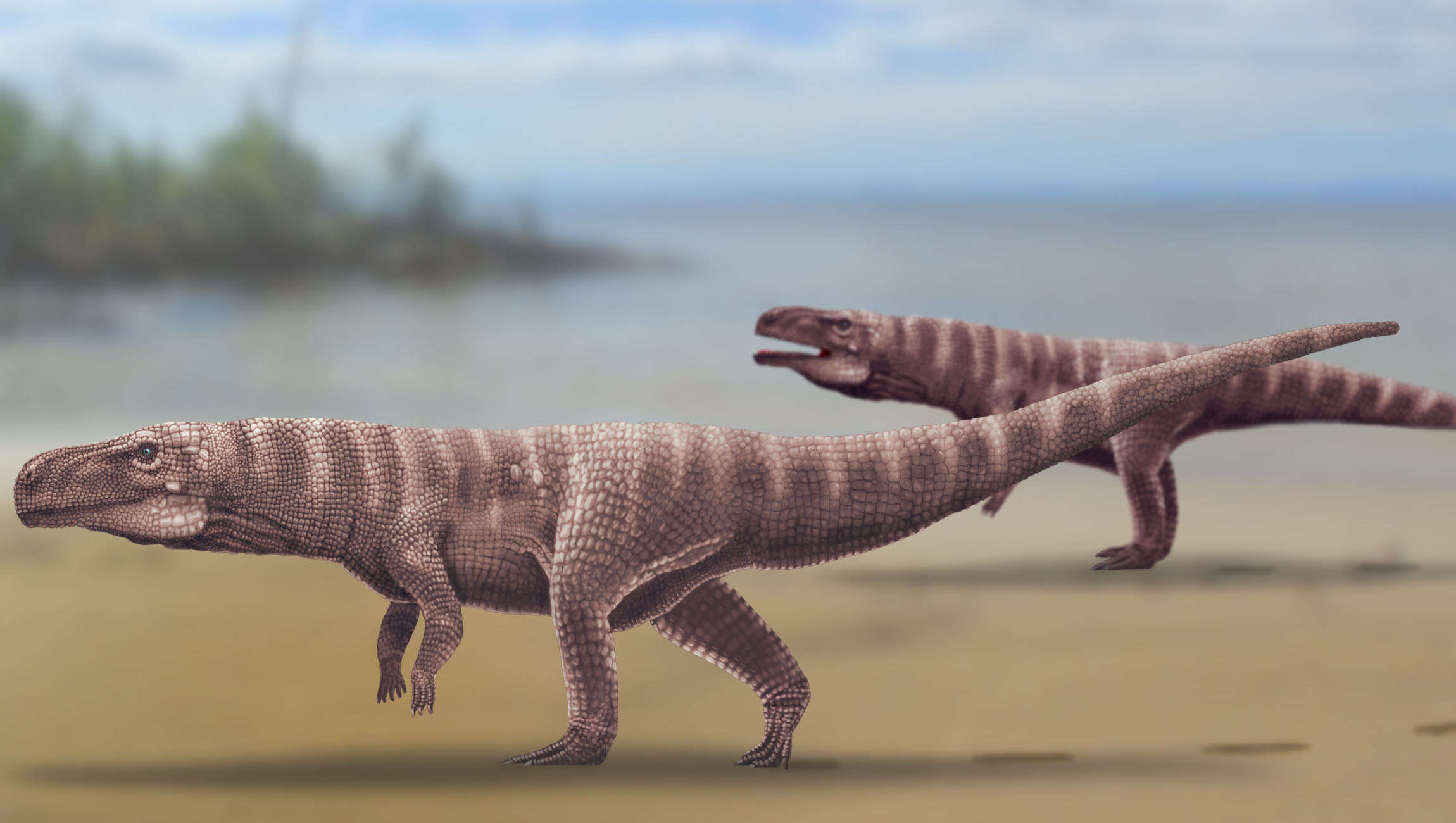Create a free profile to get unlimited access to exclusive videos, sweepstakes, and more!
Mysterious footpirints suggest Cretaceous crocodiles may have been walking around on two legs

Weird phenomena happened around a hundred million years ago, like dinosaurs growing to almost impossible sizes and crocodiles roaming around on two legs.
Crocodylomorphs — prehistoric ancestors of the familiar beasts that now lurk in rivers and swamps — used to dominate on land, but were thought to have gone extinct after the Triassic period. These creatures are known to have walked on two legs. Its closest known Cretaceous relative got around on all fours, many years later. So what did it mean when a team of scientists digging in South Korea’s Jinju Formation discovered footprints that supposedly belonged to a Cretaceous bipedal crocodile-thing that existed long after its predecessors died out?
What made these fossilized footsteps especially hard to demystify is that no skeletal remains of this creature have been found yet. There is only so much you can do with an ichnotaxon, or fossilized evidence of an animal’s existence that does not include any bones from the animal itself. The scientists had to go off the morphology of its earlier Batrachopus (literally “frog foot”) relatives from the early Jurassic. Not only did the footprints resemble imprints of Batrachopus feet, but they were also larger than any other Batrachopus tracks ever found. They also seemed to suggest the reptile was capable of running like an ostrich.
“Surprisingly, the trackways appear to represent bipedal progression … this suggests gaits atypical of large crocodylomorphs,” the team, which named this new species, said in a study recently published in Nature. They appropriately named the new species Batrachopus grandis.
Though there were suspicions that these tracks belonged to a younger crocodylomorph that had previously gone undiscovered, some things had to be ruled out. Was it possible that the prints were left by pterosaurs which walked on land when not taking to the air? While scientists considered that, pterosaurs waddling on the ground would have probably left drag marks from their wings trailing behind them. Winged dinosaurs were rather clumsy on land. Skeletal evidence proved that most pterosaurs would walk on all fours when they landed, and the mysterious trackways left only by their hind feet just didn’t match up to the strange tracks in the Jinju Formation, so that was out.
There were other possibilities that could have proven the walking croc hypothesis wrong. Crocodiles and alligators often swim vertically and tap the bottom with their feet to stay afloat. Maybe that was the explanation behind crocodylomorph tracks that only showed the hind feet and no traces of the forefeet. Further investigation disproved that. Whatever left the prints could have also been walking either on a surface where the forefeet touched ground where they left no tracks (think of dry sand), while the hind feet walked on ground where they left well-defined tracks (like wet sand). It also depended on how the animal walked. If it was quadrupedal, it might never have put as much pressure on its forelegs as it did on its hind legs.
“Both scenarios, while intriguing and necessary to consider, are based only on inference and negative evidence, rather than the abundant trackway evidence,” the team said, adding that "[tracks] previously described as 'enigmatic' and incorrectly assigned the pterosaurian ichnogenus Haenamichnus (as H. gainensis) are reinterpreted as … representing large crocodylomorphs. These apparently also indicate bipedal progression, and increase the database for this trackway morphotype in space and time.”
While skeletal remains, or at least bone fragments, are the only thing that can really tell us that an ancestral crocodile walked on two legs and could even speed up to a run, just be glad that a croc can’t get up and chase after you like that anymore.



























